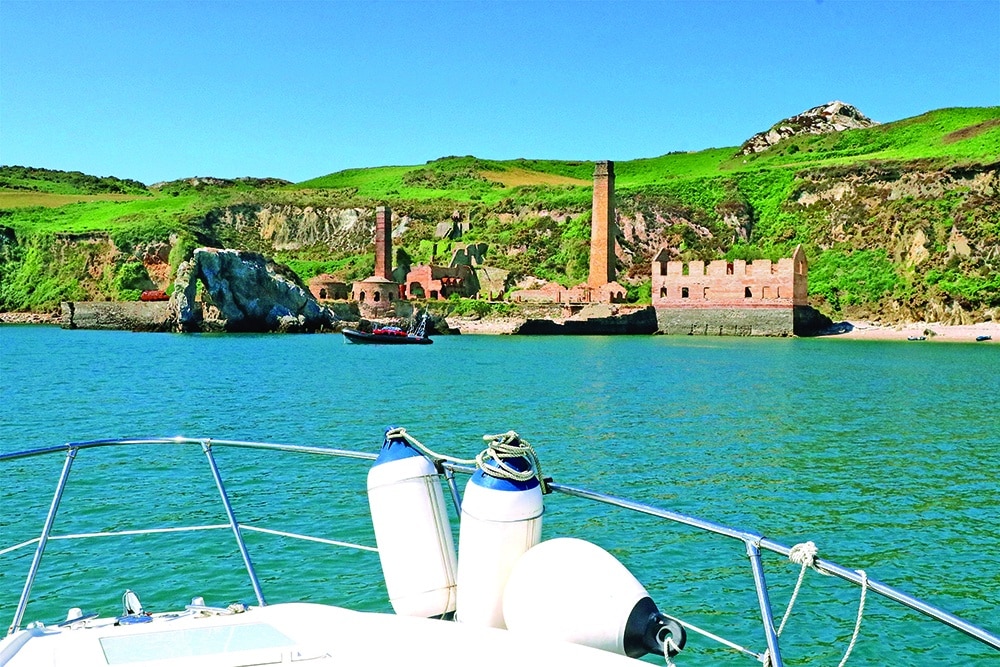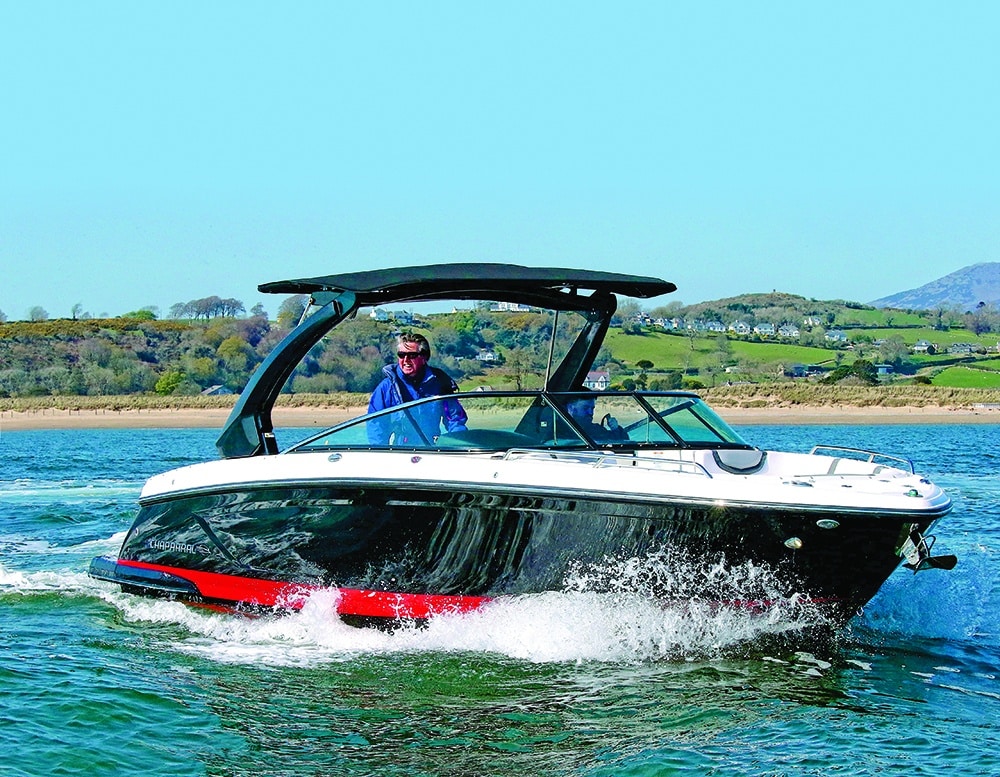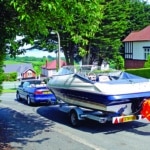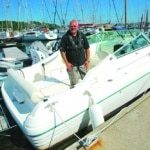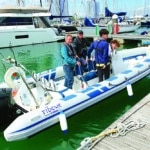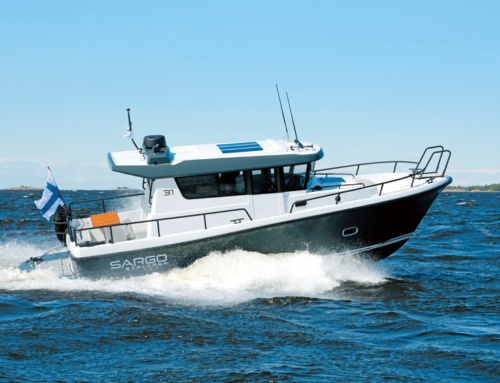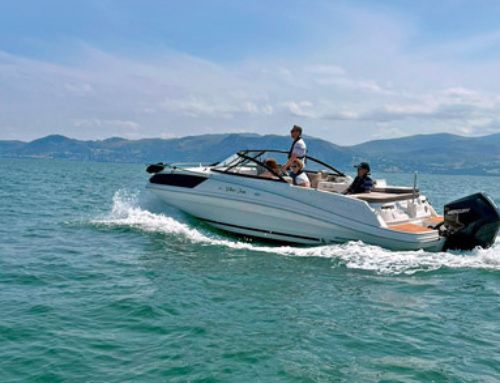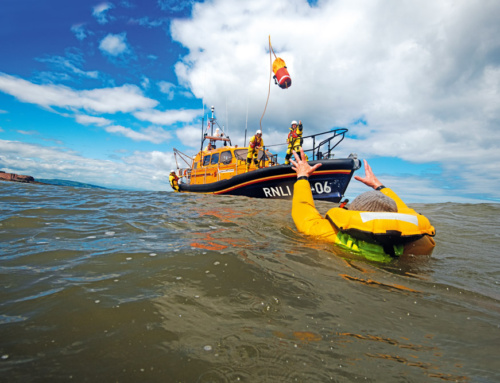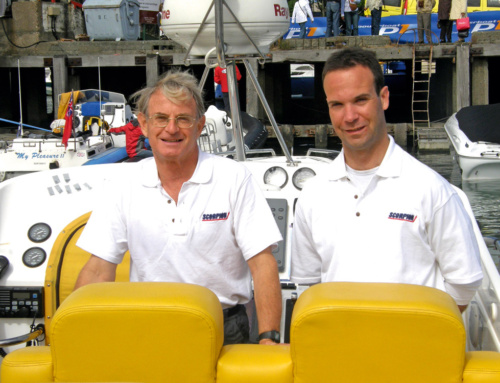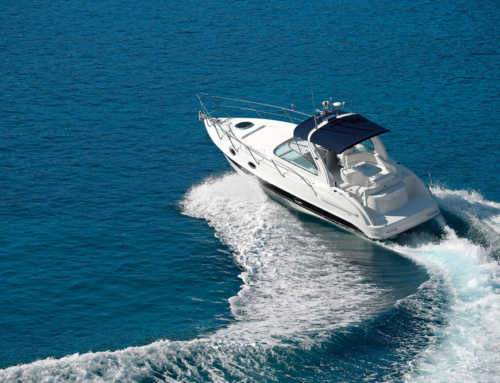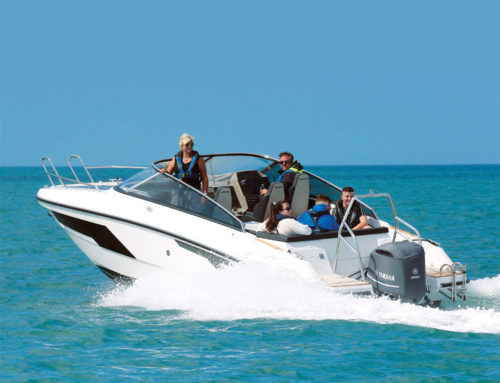Not a lot of time? Alex Whittaker explores the advantages of day cruising…
Always bear in mind that two boats are better than one, and it is always better, safer and more fun to cruise in company.
Like many others, we keep our boat in a marina. It is expensive, but we feel it currently offers the best balance of cost against convenience. The boat is safe, and we know that we can literally turn up at the last minute, crank up the V8 and run away to sea. But as the great Bard penned, ‘Aye, there’s the rub …’ Where do we go? What do we take with us? How long do we stay out?
Boat usage
For many decades we have marvelled at just how little use most pleasure boats get. Most of us have to work long and hard to buy our boat, and then almost run out of time to use it! The fact is, most boats are luxury items that just do not get the usage they deserve. Mind you, social trends may be changing the way we use our boats. Covid restrictions and ‘staycationing’ notwithstanding, it seems that many owners are now doing more day cruising. Also, the lockdown has undoubtedly led many more families to look favourably upon owning a boat. Furthermore, when we think of day cruisers, size really does not matter. Indeed. these days it is quite common to see larger cruisers used exclusively as day boats.
Day cruising
The truth is, day cruising has become a better ‘fit’ with hectic modern lifestyles – and not just for those lucky rascals who are ‘cash rich and time poor’. No, it now includes the rest of us huddled masses, who somehow can never find enough time for a classic two-week cruise. So carefully planned multi-port itineraries are out, and smart, chic, low-hassle, fast day trips are in.
Cruising grounds
If your new boat is a trailer craft, you already have a much-enhanced choice of day cruising grounds. You can just load up and tow your boat to a better base with oodles more cruising options that the average marina. As a family, we have done this for decades with both inboard and outboard sub-20-footers. As new owners, we did not get straight into the mysteries of tidal waters and coastal navigation. Nor did we attend any RYA powerboat courses. Looking back, we were too eager to get started. Instead, we took it in bite-sized chunks.
Shakedown
We began with a week afloat on Windermere, just a few days after we purchased our first ‘sea’ boat. In those days one could open up the throttle in large parts of Windermere. Our Windermere shakedown cruise taught us a surprising amount about handling our new boat at speed. Our agile little cuddy could do well over 35 knots and could turn on a sixpence. The G-forces on banking through those turns was a revelation compared to our previous slow displacement craft. We loved it. We also loved camping aboard to save money and then eating out in posh restaurants that evening to spend what we had saved! Our Windermere trip taught us the importance of having to work out our actual fuel consumption, while learning how to drive fast safely and how to handle the boat in strong winds and surprisingly big waves – all good prep for safe day boating at sea.
- A trailer boat greatly expands your day boating options.
- Cuddies make versatile family day cruisers and weekenders.
- Going safely equipped is a key element of day cruising.
Sea stuff
Moving the boat to the sea was a big step up. Now tides, buoyage and drying harbours all had to be factored into the equation. After a season of fast lake and non-tidal powerboating we knew all about how to set the boat up for day cruises, which items to carry aboard and what to leave behind. We bit the bullet. We put the boat in a coastal marina less than an hour from our house, and we were now ready to tackle tidal UK day boating, with all that entailed.
Local waters
Our considered advice would be to choose a UK marina with all-tide access as your first base. This means that if you are out on the ocean wave and you overcook it in terms of wind or waves, you will be able to run quickly back home, knowing there is enough water to get back in. Many moons ago we chose Pwllheli Marina for our first three weeks of sea day cruising. For two weeks we played safe in the deep water and just ran out to lovely Abersoch and its islands, where we sunbathed and ate lunch before running home. At that stage all our day trip navigation was by chart and eyeball, with the odd compass bearing thrown in for practice. Utterly magically for city kids like us, we saw cormorants, dolphins, porpoises and all manner of waders very close to the cockpit of our boat. We even bought a book to help us spot the myriad of seabirds we were encountering for the first time. The water was deep, so if we gave the coast a good offing we could run flat out in complete safety. I remember seeking out quirky Gimblet Rock as a great seamark on our return. This was basic stuff, but it got us used to handling the boat at sea in manageable conditions, with no significant tidal issues. As our knowledge increased, we soon moved up a notch to carefully picking our way into small but drying Welsh ports at high tide. We did this by carefully following the buoyed channel. Once or twice we were caught out by wind or tide, but that was all part of the learning experience. This was very exciting, and of course, once you get used to such coastal buoyage and pilotage, it is more or less the same in most of the UK. Bit by bit, we made more demanding day cruises and got into the swing of tides, buoys and currents. We also learned what additional things we really needed to take aboard for UK coastal cruising.
Day cruising set-up
It is a bit of a fraud to claim that a boat is set up for day cruising. In truth, day cruising is a just a subgenre of cruising. A well-sorted vessel in full cruising trim is a great day boat. It is also easy for scribblers like me to give counsels of excellence and churn out vast lists. However, the truth is, beyond securing the safety and comfort of your crew, a minimally set-up day boat is always great fun. We will give you our own lists in a moment, but frankly, after carrying aboard the life jackets, hand-held VHF and basic resources like water, snacks, knife, icebox, spare clothes and suncream, you can pick and mix. Part of the fun of boat ownership for us was setting up our simple 18- or 20-footers exactly as we would for pukka cruising. We did this knowing that we could day boat, or take a weekend or week’s cruise, at a moment’s notice. This means that we had sorted out the ropes and anchor, the fenders and stowage, and the safety and navigational aids for proper cruising. These days we definitely use our boat more for fast day boating than extended cruising. However, we do take pride in keeping her in cruising trim. For our full list of how we prepare for cruising and what we take with us, check out the ‘Day boating essentials’ boxout below.
Points to consider
All cruising – day or long-distance – requires a well-found boat with no nagging issues like poor batteries, dodgy starting or a misfiring engine. We also check all fluid levels on the engine and outdrive before setting off. We write down a simple list-style passage plan in conjunction with our paper chart and pilot guide. If you have a chartplotter, or a smartphone app, all the better. These days, we also like to run through our paper passage plan ahead of time on our chartplotter. Next, we tell our marina of our intended passage plan before leaving, and also when we plan to return. Before leaving the berth on a fast powerboat, stowage and tying things down always need careful consideration. In the past, we have tended to rely on the cuddy to swallow up most of our gear!
Cruise in company
Always bear in mind that two boats are better than one, and it is always better, safer and more fun to cruise in company. As for the weather forecast, we study what it means for our route, and our boat. Another rule is: never completely trust a weather forecast! Retain your healthy scepticism and plan accordingly. We listen to the scheduled daily weather bulletin updates from the coastguard on our VHF and continue to listen as our day cruise progresses. As for where to go, well, generally speaking, coastal passages allow you more room for error than offshore passages, or fast blasts out to remote islands. Remember: the crew come first. In worsening conditions, never feel bad about turning back early. Make sure you know your accurate day cruise distance to be covered each way, and ensure that your fuel tanks are full so you can easily get out and back with a safe margin of fuel remaining. Plan alternative bolt-holes if you feel that changes in the weather might not let you back home. If the entrance to your marina dries like ours, then planning alternative bolt-holes becomes hugely significant. Most UK coastal day boating means going out early and coming back on the same tide. If you plan a two-tide strategy (i.e. staying out past the next low water), your weather and chart knowledge must be up to speed. Note that when you get to your target beach or cove, secure anchoring needs the correct ground tackle and technique. You will need to know how to deploy your anchor, perhaps reversing the boat a little to set it, and then exactly how to recover it later, especially if the sea state worsens. Before now, in bad weather, we have buoyed and then cut loose our anchor rode when we knew we could not safely recover it. We just went back to get it when the weather improved. Another point to watch out for is the time of sunset in any early- or late-season day cruising. Make sure you allow enough daylight for your planned late-afternoon/sunset cruise. This has caught us out more than once, particularly at the end of the season. We have had enough water to get back, but not enough daylight to pick our way easily back to the marina. Another phenomenon to consider is fog. In the UK in summer, fog never entirely goes away. Set up your chartplotter with a safe track home – this at least will help under such trying circumstances. A cool head, ears wide open and a true track home will save the day.
Wet, wet, wet
Bear in mind that you are highly likely to get wet at any time around the UK coast! We usually run fast without our bimini top for that exhilarating 360-degree fast powerboating experience. This means that if it rains unexpectedly, we will get wet. Even in high summer, take enough waterproofs to allow for such contingencies. As for emergencies, well, in our experience things can go pear-shaped very quickly at sea. At the first sign of trouble, swallow your pride and inform the coastguard of your predicament. This will relax you, and often you can then sort the issue out for yourself. If not, tell them as soon as you know you definitely cannot fix it yourself. We have also noted that changes in the weather can have simple, but sometimes unforeseen, knock-on consequences. Give some thought to how you will put your fenders back out if you have to rush back because of bad weather. We have devised our essential fender ropes so that we can put the fenders back out from the safety of the cockpit – and not from a bouncing foredeck.
Seasickness
Seasickness is another fact of boating life. We all respond differently to the motion of a boat. Avoiding slamming and high-G turns might help some sufferers. Taking medication prior to the trip can help with some people, but be prepared to turn back straight away if crew are sick. We find staying on deck in the fresh air helps. Incidentally, when the editor of this great organ recently announced that Coca-Cola was a possible easement of seasickness, I wholeheartedly agreed with him. It is always worth a try. Something else easy to overlook in your haste to get out on the water is the stealthy onset of sunburn. It is easy to forget, even on windy, cooler, brighter days at sea, that the sun is still taking its toll, dehydrating your skin and body. Rehydration drinks, hats, suncreams, lipsalves and humble bottled water all have their place. If global warming progresses, putting up our bimini hood might be a good idea after all.
The verdict
All in all, day boating encapsulates most of ‘the best bits’ of fast cruising, though sleeping at anchor will never pall. We tend to blast out to our ‘halfway’ beach, turnaround point or anchorage at full speed, and then often dawdle back looking for wildlife. It also saves on expensive fossil fuels. Finally, you cannot beat a sundowner on the back deck before turning in at the berth, so during the day we save the alcohol until we are back there. Then we have a boozy party. This is well deserved – and will improve the quality of the skipper’s yarns!
Day boating essential items
Bronze: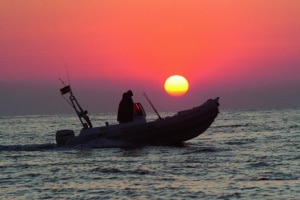
- Full tank of fuel
- Life jackets
- Fire extinguisher
- List-style passage plan
- Weather forecast from marina
- Note of sunset time
- Chart and compass
- Hand-held VHF
- Charged phone and charge lead
- Snacks & Bottled water
- Spare jacket
- Sun hat, Sunglasses & Suncream
- Flares
- First-aid kit
- Knife
- Tow rope
- Boathook and someone to use it
- Basic tools and gaffer tapes
- Man-overboard recovery system/lifebuoy/rope
Also: Tell the marina your passage plan and projected return time
Silver: 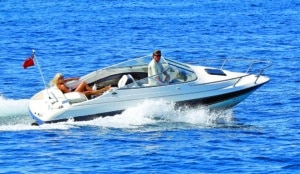
All the bronze items plus:
- Routes pre-entered in your chartplotter
- Carry-aboard Bluetooth speaker
- Cooler box and ice
- Camera
- Binoculars
- Boards, water toys and bridle
- Fishing gear
- Snorkel gear
- Pool noodles
- Family stuff, cards, games, books
- Towels
- Change of clothes
- Carry-aboard Porta Potti for kids
Gold: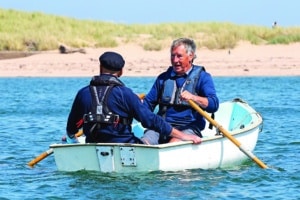
All the silver items plus:
- Fridge, fitted or one of the new carry-aboard items, fully stocked of course
- Playlist on your smartphone for subtle vibes at anchor
- Dinghy to run ashore for pub lunch
- Pre-prepared on-board dinner with ice-cold drinks
- Deck shower
- Sea toilet and holding tank
